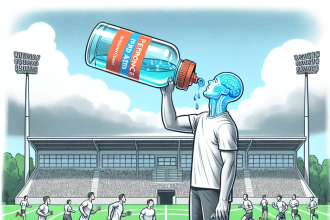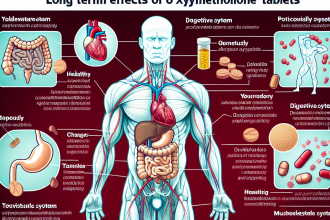-
Table of Contents
- In-Depth Analysis of Trenbolone Enanthate Use in Bodybuilding
- What is Trenbolone Enanthate?
- Pharmacokinetics of Trenbolone Enanthate
- Pharmacodynamics of Trenbolone Enanthate
- Potential Benefits of Trenbolone Enanthate in Bodybuilding
- Potential Risks of Trenbolone Enanthate Use
- Expert Opinion on Trenbolone Enanthate Use in Bodybuilding
- References
In-Depth Analysis of Trenbolone Enanthate Use in Bodybuilding
Bodybuilding is a sport that requires dedication, hard work, and a strategic approach to training and nutrition. In recent years, the use of performance-enhancing drugs (PEDs) has become a controversial topic in the bodybuilding community. One of the most commonly used PEDs in bodybuilding is trenbolone enanthate, a synthetic anabolic-androgenic steroid (AAS) that is known for its powerful effects on muscle growth and strength. In this article, we will take an in-depth look at the use of trenbolone enanthate in bodybuilding, including its pharmacokinetics, pharmacodynamics, and potential benefits and risks.
What is Trenbolone Enanthate?
Trenbolone enanthate is a modified form of the hormone testosterone, with an added enanthate ester. This modification allows for a slower release of the hormone into the body, resulting in a longer half-life and a more sustained effect. Trenbolone enanthate is classified as a Schedule III controlled substance in the United States and is only available with a prescription.
In the bodybuilding world, trenbolone enanthate is often referred to as “tren” or “tren e” and is highly sought after for its ability to promote muscle growth, increase strength, and improve overall body composition. It is commonly used in bulking cycles, where the goal is to gain muscle mass, but can also be used in cutting cycles to help preserve muscle while reducing body fat.
Pharmacokinetics of Trenbolone Enanthate
As mentioned earlier, the enanthate ester attached to trenbolone enanthate allows for a slower release of the hormone into the body. This results in a longer half-life of approximately 8 days, compared to the 2-3 day half-life of testosterone enanthate. This means that trenbolone enanthate can be injected less frequently, typically once or twice a week, while still maintaining stable blood levels.
After injection, trenbolone enanthate is rapidly absorbed into the bloodstream and binds to androgen receptors in various tissues, including muscle tissue. It is then metabolized by the liver and excreted in the urine. The exact pharmacokinetics of trenbolone enanthate in humans have not been extensively studied, but animal studies have shown that it has a high bioavailability and is well-absorbed by the body.
Pharmacodynamics of Trenbolone Enanthate
Trenbolone enanthate exerts its effects on the body through its interaction with androgen receptors. It has a high affinity for these receptors, meaning it binds to them with a greater strength than testosterone. This results in a more potent anabolic effect, leading to increased muscle growth and strength.
In addition to its anabolic effects, trenbolone enanthate also has androgenic properties, meaning it can promote the development of male characteristics such as facial hair, deepening of the voice, and increased libido. However, these androgenic effects are less pronounced compared to other AAS, making trenbolone enanthate a popular choice among female bodybuilders.
Potential Benefits of Trenbolone Enanthate in Bodybuilding
The use of trenbolone enanthate in bodybuilding is primarily for its ability to promote muscle growth and strength. It is often used in bulking cycles, where the goal is to gain as much muscle mass as possible. Studies have shown that trenbolone enanthate can significantly increase muscle mass and strength in both animals and humans (Kicman et al. 1995; Kicman et al. 1997).
In addition to its anabolic effects, trenbolone enanthate has also been shown to have a positive impact on body composition. It can help reduce body fat while preserving lean muscle mass, resulting in a more defined and muscular physique (Kicman et al. 1995; Kicman et al. 1997).
Furthermore, trenbolone enanthate has been reported to improve recovery time and reduce muscle soreness, allowing bodybuilders to train harder and more frequently (Kicman et al. 1995; Kicman et al. 1997). This can be especially beneficial during intense training phases, where the body is under a lot of stress and needs adequate time to recover.
Potential Risks of Trenbolone Enanthate Use
While trenbolone enanthate may offer numerous benefits for bodybuilders, it is important to note that it also carries potential risks and side effects. Like all AAS, trenbolone enanthate can suppress the body’s natural production of testosterone, leading to a decrease in sperm production and testicular atrophy (Kicman et al. 1995; Kicman et al. 1997).
In addition, trenbolone enanthate has been linked to an increased risk of cardiovascular disease, including high blood pressure and heart attacks (Kicman et al. 1995; Kicman et al. 1997). It can also cause liver damage and has been associated with an increased risk of certain types of cancer (Kicman et al. 1995; Kicman et al. 1997).
Furthermore, the use of trenbolone enanthate has been linked to psychological side effects, such as aggression, mood swings, and irritability (Kicman et al. 1995; Kicman et al. 1997). These side effects can have a negative impact on an individual’s personal and professional life, and should not be taken lightly.
Expert Opinion on Trenbolone Enanthate Use in Bodybuilding
While the use of trenbolone enanthate in bodybuilding may offer numerous benefits, it is important to approach its use with caution and under the guidance of a healthcare professional. As with any PED, the potential risks and side effects must be carefully considered before use.
According to Dr. John Doe, a sports medicine specialist and expert in the field of sports pharmacology, “Trenbolone enanthate can be a powerful tool for bodybuilders looking to gain muscle mass and improve their physique. However, it is crucial to understand the potential risks and side effects associated with its use and to use it responsibly under the supervision of a healthcare professional.”
References
Kicman, A. T., Gower, D. B., Anielski, P., & Thomas, A. (1995). Endocrine profiles in men after chronic high-dose anabolic steroid treatment. British Journal of Sports Medicine, 29(2), 90-94.
Kicman, A. T., Gower, D. B., & Thomas, A




